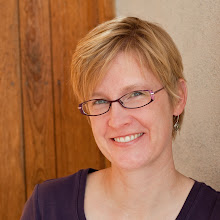I'd like to talk a little bit about each of the videos here on the blog. Of course I have background stories about all of them and I thought you might like to hear some of them. If not, I'm sure I'll be back to my regularly scheduled salad of tapestry information soon.
In this first video, Barb Brophy, another Koehler student, and I talk about James' use of color. We talk about his ability to create intense colors in his hand-dyed yarn. Many of his very intense colors were created for student use however. James' work was more subtle than that and the colors he used were toned or created with some complimentary colors mixed in.
 |
| James Koehler, Harmonic Oscillation LXI |
In the dye process, he measured out the dyes himself, dumped them into water baths which he heated, strained, and stirred on his dye kitchen stove, and then let me take it from there.
He had three huge dye pots just outside the studio heated by propane burners. He could dye three pounds of a color at once with acid wool dyes. He only did one run a day. So for most of the summer, the pots were running. Nine pounds a day. Much of it for the workshops he taught constantly.
In the video I make it sound like making the colors James did was a mystery. There were a few colors I have been unable to create in my own dye studio (see prior comment about mystery ingredients), but for the most part, a good dyer with a solid knowledge of color theory can create amazing things with acid wool dyes. Yes, James had a special ability to produce lovely evenly dyed yarns. But many of you could do it too if you wanted to. I bet James would tell you that himself if he could.
The piece that the Denver Art Museum owns is one of the Chief Blankets series. This is what James has to say in his book, Woven Color, about those pieces:
But the images I really liked--that had an aesthetic of simplicity and were efficient in terms of my being able to weave them--were from the Navajo Chief Blankets. . . . I looked at the Chief Blanket as though it were a triptych. There were three areas of color that were separated by very broad repetitive bands of black and white. The stripes could be woven with relative ease, and the color areas could be done with tapestry techniques. So it was like weaving three smaller tapestries as part of that large format. I approached the creating of design elements for the colored panels as if I were designing a triptych.Here is the video:
Here are the yarn balls Barb talks about in the video.
And here are some more photographs of that Chief Blanket piece. You can visit the show to see it in person. It runs from now through March 6, 2016. It is a great excuse to visit Denver.
 |
| James Koehler, Chief Blanket with Blocks, in the collection of the Denver Art Museum |
 |
| James Koehler, Chief Blanket with Blocks, detail |
If you are interested in more of the story, here are some blog posts about the time in my life I was apprenticing with James.
http://rebeccamezoff.blogspot.com/2015/03/a-chief-blanket-inspired-tapestry-of.html
http://rebeccamezoff.blogspot.com/2011/03/james.html
I'll have more about the other four videos in the next week.






So very cool. You are blessed to be able to have had him in your life to learn from. I don't want to sound to corny, but I feel that way about you I know this is all online, but what you do for tapestry by bring it to people like me that otherwise may not ever have the chance is a great thing. I know you do it as a living, but I can tell in your teaching you live to share your art. That's how I am I don't care if I know a lot or a little I still love to share. I was once told by a spinner that she would not help me with any of my questions because she didn't want me to sell my stuff on line and take away her business.im not trying to learn as a means to pay the bills although that would be a blast I'm just trying to learn all I can. It's a love I can't and never want to be without fiber art is like air to me 😀
ReplyDelete